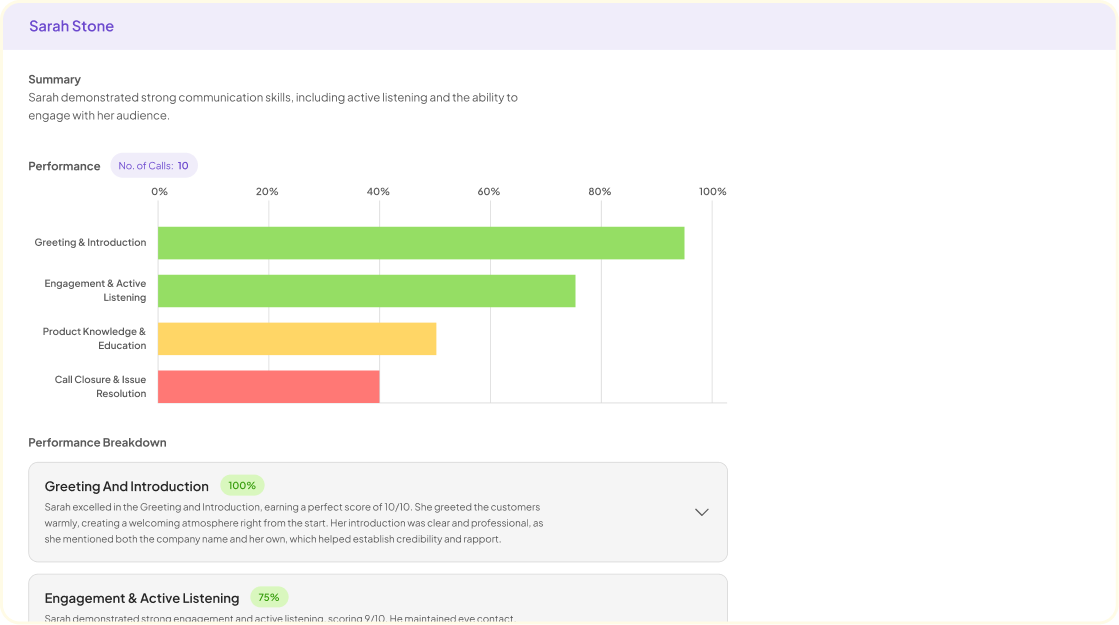Qualitative Insights Analysis forms the backbone of understanding consumer behavior, preferences, and emotions. With the ever-growing importance of data in decision-making, capturing the nuances of human experience is crucial. This analysis allows businesses to delve deep into customer sentiments through various qualitative methods, such as interviews and focus groups.
By employing these methods, organizations can gain rich narratives that quantitative data alone cannot provide. The insights gained illuminate trends, motivations, and challenges faced by users, enabling companies to craft tailored strategies. Embracing qualitative research is more than just collecting data; it enhances the overall user experience and drives effective business growth.
Understanding Qualitative Insights Analysis in Market Research
Qualitative Insights Analysis is a crucial method in market research, providing a deep understanding of consumer behavior. This analysis focuses on gathering rich, descriptive data that reveals the motivations, feelings, and experiences of customers. By conducting interviews and discussions, researchers can uncover themes and pain points that aren't directly measurable through quantitative data. This narrative-driven approach allows businesses to craft more effective strategies based on genuine customer input.
Engaging with customers through qualitative methods enables a richer interpretation of their needs. It opens the door for organizations to create personal connections, making their offerings more relevant and appealing. Crucially, the insights gathered can be summarized and categorized into actionable themes, ensuring that the data serves a purpose beyond mere collection. In this way, qualitative insights not only illuminate customer challenges but also foster trust and engagement in the brand experience.
What is Qualitative Insights Analysis?
Qualitative Insights Analysis is a method used to gather and interpret nuanced information from various sources. This approach focuses on understanding the underlying reasons behind consumer behaviors and preferences. By conducting thorough interviews and discussions, researchers can uncover valuable insights that quantitative methods may miss.
This process can be broken down into three essential steps. First, researchers engage with participants through interviews, encouraging them to express their thoughts and experiences. Next, collected data undergoes careful analysis to identify patterns and key themes. Finally, the insights derived are synthesized into actionable recommendations tailored to specific market needs. This type of analysis allows businesses to make informed decisions based on consumer sentiment and desires, ultimately driving strategic initiatives and enhancing product offerings.
Importance of Qualitative Insights Analysis in Market Research
Qualitative Insights Analysis plays a pivotal role in understanding consumer behavior and market trends. It delves into emotions, perceptions, and motivations that drive customer decisions, providing a depth that quantitative methods often overlook. By capturing the richness of human experiences, this approach reveals why consumers feel a certain way about products or services, thereby informing strategic decisions.
Moreover, integrating qualitative insights can enrich data interpretation, transforming raw information into actionable strategies. This method highlights key themes and patterns, which can guide product development and marketing tactics. For instance, analyzing customer feedback through qualitative methods allows businesses to identify prevalent concerns, enabling them to address issues effectively. Thus, the importance of qualitative insights lies in their ability to create a more comprehensive picture of the market, ensuring organizations can respond dynamically and meet consumer needs efficiently.
Key Qualitative Methods for Insights Analysis
Qualitative insights analysis plays a crucial role in market research by capturing human experiences, perceptions, and motivations. Understanding consumer behavior demands an approach that goes beyond numbers, focusing instead on the nuances of qualitative data. Conversations, interviews, and focus groups are essential techniques that facilitate this deep exploration into client sentiments and behaviors.
Here are some key qualitative methods to employ in insights analysis:
In-Depth Interviews: These one-on-one sessions allow researchers to delve into the participant's thoughts, feelings, and experiences. They uncover personalized insights that often lead to breakthrough ideas for product improvement or new services.
Focus Groups: Bringing together a diverse group of individuals fosters dynamic discussions that reveal collective attitudes and motivations. Observing group interactions can highlight how opinions are formed and influenced by peers.
Ethnographic Studies: Immersing researchers in the participants' environments offers rich context about user interactions with products or services, uncovering behaviors that surveys often miss.
Utilizing these methods effectively can lead to profound qualitative insights analysis, paving the way for strategic decision-making and enhanced customer experiences.
In-depth Interviews: Gaining Personal Perspectives
In-depth interviews serve as a powerful approach to gathering qualitative insights that uncover personal perspectives across various demographics. By engaging participants in open-ended conversations, researchers can delve deeper into emotions, motivations, and underlying beliefs that drive consumer behavior. These interviews provide a rich tapestry of narratives that quantitative methods may overlook, revealing nuanced insights critical to understanding market trends and user experiences.
When conducting these interviews, it is essential to create a comfortable atmosphere where participants feel valued and heard. This approach not only encourages candidness but also fosters trust, leading to more authentic responses. Additionally, careful analysis of the responses enables researchers to identify recurring themes and unique viewpoints, ultimately enhancing qualitative insights analysis. By combining personal stories with systematic analysis, companies can gain deeper understanding and translate these insights into meaningful business strategies.
Focus Groups: Harnessing Group Dynamics for Insights
Focus groups serve as a powerful tool in qualitative insights analysis, tapping into group dynamics to uncover rich, nuanced data. By gathering a diverse group of participants, researchers can observe how their interactions spark ideas, challenge perceptions, and reveal underlying motivations. This collaborative environment encourages candid discussions, offering insights that might not surface in one-on-one interviews.
To organize focus group analysis effectively, consider the following key pointers:
Defining Objectives: Clearly outline the goals of your focus group. What specific insights are you aiming to gather? This clarity sets the stage for meaningful discussions.
Participant Selection: Choose a balanced mix of participants that reflect your target market. Representing varied perspectives helps in generating robust insights.
Facilitating Discussion: An experienced moderator can guide the conversation, encourage participation, and delve deeper into topics that arise organically.
Data Collection Methods: Utilize audio or video recording, along with note-taking, to capture every nuance of the conversation for thorough analysis later.
Analyzing Results: Post-discussion, analyze the recordings and notes to detect patterns, themes, and key takeaways. This will aid in generating actionable insights to inform your strategies.
By focusing on effective facilitation and thorough analysis, focus groups can be a rich source of qualitative insights that drive informed decision-making.
Implementing Qualitative Insights Analysis in Business Strategy
Qualitative Insights Analysis is an essential tool for businesses aiming to incorporate rich, human-driven perspectives into their strategic decisions. By tapping into customer interviews and behaviors, organizations can identify themes that reveal pain points and desires. This direct feedback not only uncovers valuable data but also provides context that numbers alone cannot offer.
To effectively implement Qualitative Insights Analysis into business strategy, consider three key steps: first, establish a system for conducting regular interviews; second, categorize and analyze the insights for emerging themes; and finally, integrate these findings into strategic planning sessions. By treating customer insights as a dynamic conversation, businesses can align offerings with real market needs. This approach not only enhances customer satisfaction but also fosters a more agile and responsive business model. Engaging with clients at this level ensures strategies remain relevant and informed by the voices of the users themselves.
Analyzing Qualitative Data for Actionable Insights
Analyzing qualitative data effectively allows organizations to derive actionable insights that can enhance decision-making and strategy formulation. By scrutinizing customer interviews, feedback, and conversations, researchers can identify recurring themes that reveal real user sentiments. Understanding these patterns is crucial in translating subjective data into valuable information for marketing and product development.
One effective approach involves identifying key themes from the conversations. For instance, researchers can categorize responses into segments such as resource allocation or feedback methodology. This systematic analysis helps in organizing responses and highlights significant insights. Furthermore, connecting direct quotes to specific themes can enrich the narrative, providing context to the data. By dissecting qualitative data thoroughly, organizations enable precise adjustments to their strategies, ensuring they meet client needs better. Ultimately, this robust qualitative insights analysis turns conversation data into foundations for actionable business strategies.
Challenges and Solutions in Qualitative Insights Analysis
Qualitative insights analysis presents several challenges that users must navigate to extract actionable data. One significant issue is the time-consuming nature of manual analysis. As organizations gather large volumes of interviews and customer conversations, traditional methods often fail to keep pace, resulting in delayed insights. This slow turnaround can hinder timely decision-making, placing companies at a disadvantage in competitive markets.
Another challenge involves the effective translation of insights into actionable strategies. Many teams struggle to cohesively communicate findings among members, leading to scattered data and disjointed efforts. Solutions to these challenges include adopting self-service platforms that streamline data analysis and enhance collaboration. By utilizing modern technology, teams can consolidate insights, accelerate analysis, and ensure that valuable customer feedback is readily available for strategic implementation. Ultimately, addressing these challenges enables organizations to harness qualitative insights more effectively, driving better decision-making and competitive advantage.
Conclusion: The Future of Qualitative Insights Analysis in Market Research
Qualitative Insights Analysis has transformed market research, paving the way for deeper understanding of consumer behaviors and motivations. As technology advances, the integration of AI and data analytics will enhance qualitative methods, allowing researchers to extract richer insights from diverse data sources. This evolution empowers businesses to decode emotional triggers and tailor their offerings more effectively.
Looking ahead, the role of human interpretation remains vital. While AI can identify patterns, skilled analysts will continue to offer context, drawing meaningful connections from complex data. Qualitative Insights Analysis will not only become more sophisticated but also increasingly focused on delivering actionable recommendations that align with market needs.


